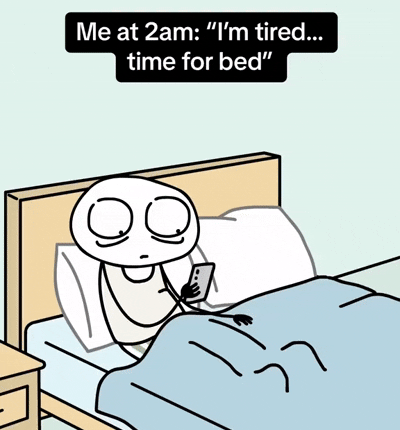tap now, think later: life without friction
the autopilot economy: how the online world amplifies our impulses and erases the pause between thought and action
I’m Tuğba, a Greek-Turkish artist living in Berlin - as slow as possible is a newsletter exploring the in-between spaces of our lives that we see but often do not notice. Interested in reading more of my work?
Your phone lights up. You swipe.
You feel a pang of anger. You reply.
You feel envy. You make the purchase.
You feel bored. You scroll for hours.
You feel insecure. You post something performative.
That text you sent too quickly. The social media update you wish you could take back. The midnight shopping spree. Pulling out your phone in the middle of a conversation. The comment section fight. The package at your door you forgot you even ordered.
These aren’t isolated slip-ups. This is the rhythm of modern life. No friction. No reflection.
Just: feel something → tap, send, post, buy.
In the world of tech, friction is a dirty word. And I don’t just mean Silicon Valley companies—I’m talking about your favourite fashion brands, your local grocery apps, your streaming platforms. Every kind of tech.
Friction means effort. Effort leads to hesitation. Hesitation opens the door for reflection. And reflection isn’t profitable.
The entire machine—every app, every platform, every UX flow—is designed to remove even the tiniest obstacle that might make you pause, think, and possibly… opt out. That pause is expensive. That moment of self-awareness? Not good for sales.
After 15 years in the tech world, I now see it clearly: no matter your title—whether you’re in marketing, product, design, or support—you’re helping to reduce friction. Because every extra click, every inconvenience, every pause costs money.
The result? We live in systems that reward reactivity and discourage reflection.
So, let’s talk about how this shows up in our day-to-day and how everyday features are designed to keep us locked in impulse mode:
One-Click Culture: Buy Before You Think
Jeff Bezos once said the most dangerous button on the internet is Amazon’s “Buy Now.”
Why? Because it completely removes friction from your decision-making.
No cart review. No second-guessing. No, “Do I actually need this?”
Just: see → want → click → done.
It feels efficient. But it’s actually conditioning. I’ve gotten so used to frictionless buying that now if a retailer adds even one extra step, I lose patience fast. To be honest, half the time, I just abandon the cart altogether.
Infinite Scroll: The Illusion of the Endless Now
Invented by Aza Raskin1—who later called it one of the most dangerous design choices ever made—infinite scroll was meant to make browsing easier. But it also quietly removes the natural end-point of your attention.
No next page. No "you’re all caught up."
Just more content. Forever.
This feature evolved into what we now call doomscrolling2—that trance-like state where you suddenly 'wake up' and realise you’ve been scrolling for an hour. No pause, no reflection—just pure reactivity on loop. And honestly, even with all the awareness I have now, I’m still mind-blown by how easily I fall into it. Every time I open Instagram, I tell myself I’ll just check one thing… and then it’s 40 minutes later.
Behavioral psychologists call this variable reward reinforcement3. It’s the same psychological mechanism behind slot machines. You never know what’s coming next, so you keep going just in case.
Auto-Play: Designed to Decide for You
Ever noticed how quickly the next episode starts on Netflix? Or how YouTube just queues up the next video, no questions asked?
That’s not convenience. That’s design doing the deciding for you. It’s called choice architecture4: the environment is designed to guide your decisions without you even realising it. Before you get the chance to ask yourself if you actually want to keep watching, the decision’s already been made for you. You’re not choosing to continue—you’re just being carried along.
I once read a comparison I loved: it’s like drifting in a stream. Everything feels smooth, easy, effortless… until suddenly, you look up and realise you’ve been pulled way off track. And you’re almost shocked at how fast it happened. And then it’s 2 am, and you feel bad because you have to be up for work in five hours.
Push Notifications: Micro-Jolts of Dopamine
Every detail of a push notification is crafted with intention—the colour, the sound, the timing. All of it A/B tested to interrupt you and demand attention now, not when you’re ready.
It’s not “check this when you can.” It’s “drop everything and look.”
And most of the time, we do. Because we’ve been trained to. That’s why I’m so critical of push notifications—they’re not just alerts, they’re little jolts designed to pull us out of presence.
How Do We Reclaim the Pause?
One of the most grounding teachings in Buddhism is the idea that freedom lives in the space between stimulus and response. That we don’t have to be ruled by our thoughts, feelings, or sensations—we can observe them without becoming them.
It’s also echoed beautifully in this quote by Viktor Frankl in his book Man’s Search for Meaning:
“Between stimulus and response there is a space. In that space is our power to choose our response. In our response lies our growth and our freedom.”
I love when Buddhism and psychology overlap like that.
That space, the pause, is exactly what modern tech is designed to erase. Because the moment you pause, you might choose something different. You might not click. You might not scroll. You might not buy.
So, what can we do?
We bring friction back into our lives. We choose to slow down, even in a world that rewards speed.
Here’s how I’ve been doing that in my own life intentionally:
Remove Saved Credit Cards
Impulse shopping has always been a weakness for me—especially books, art supplies, sometimes clothes.
This year, I finally got fed up with the cycle. So, I went into every site I shop from regularly and removed all my saved credit cards. Now, if I want something, I have to manually enter my card number. And if you want to go a step further where possible add two factor authentication.
It’s annoying. And that’s the point.
That moment of effort gives me space to ask, Do I really want this? Sometimes, the answer is still yes. But more often than not, the urge fades.
Turn Off Auto-Play
Yes, you can turn it off. And I’ve done it on every platform I use regularly. Even that small moment of having to press 'play next' gives me a second to check in: Do I actually want to keep watching? Or am I just getting pulled along? I don’t watch much Netflix, but I can easily fall into a YouTube rabbit hole. And honestly, there’s nothing wrong with that once in a while—as long as it’s a choice.
Put Your Phone Away When You’re With People
This one seems obvious, but it’s powerful.
Research shows5 that even a phone on the table makes us less present. When I’m out for dinner, I put mine in my bag or switch to airplane mode.
It still blows my mind how many couples sit across from each other at restaurants, scrolling on their phones in silence. I recently solo-travelled through Asia, and when you're alone, you people-watch more. And wow… the things I’ve seen. I’m not here to shame anyone, but seriously—how did we get to this point? How have we become so indifferent to the actual human being sitting right in front of us? No message, no notification, no breaking news is more important than the time we get to spend with our loved ones.
Set Screen Time Limits
Yes, even if you ignore them, screen time limits6 still force a moment of awareness. They’re like a speed bump—not enough to stop you, but enough to make you notice.
Sometimes, I dismiss them. Sometimes, I take them seriously. Either way, I’m not sleepwalking through the scroll anymore.
Delay Your Response
If a message feels emotionally charged—don’t send it. Not right away.
I often draft things in my Notes app first. Walk away. Come back later. Almost always, I tweak it. My emotions have softened. My perspective has shifted. I’m grateful I waited.
Same goes for Slack messages and work emails. Every pause helps.
Remember that humanising our interactions acts as an antidote to digital disinhibition.
Fun fact: while I was doing some research, I came across a Social Media Regret Analyser.
Breathe. Literally.
That urge to scroll, shop, post—just to be impulsive—is very human. But the problem is, we live in a society that makes it easier than ever to act on those impulses. There’s almost no resistance. No barrier. And while I wouldn’t want to miss out on the benefits of technological progress, I do think we need to be more aware of what’s actually serving us—and what isn’t.
The good news is we can practise. We can work on our impulses daily. That’s why I love meditation—not because it “clears the mind” but because it teaches me how to resist the urge to react.
When I meditate, I feel everything: thoughts, emotions, physical tension. Some feel urgent. Like they need immediate action. But if I sit long enough, they fade. Another wave comes. Then that one fades too.
Meditation, for me, is training in non-reactivity. And that’s why I think it’s one of the hardest things to do these days. We’re so used to acting on every impulse that stillness feels uncomfortable. It feels like resistance.
So, here’s what I’m wondering:
Can you see these impulse patterns in your own behaviour?
Have you tried adding friction back into your life in some way?
What worked for you—and what didn’t?
I’d love to hear about your experience.
I started this Attention Series to explore how technology affects our attention and how we can take steps to improve it. If you’d like to read more, just scroll down to see the rest of the posts in the series.
I’ll leave you with one of my favourite quotes:
“All of humanity's problems stem from man's inability to sit quietly in a room alone.”
— Blaise Pascal, Pensées
Take care!
Your friend Tuğba
All my writing is free—but it’s definitely not effortless. I work another job to pay my bills, but that means early mornings, late nights, and sometimes weekends just to get these words out.
So, if this piece resonated with you, here’s how you can support it:
→ Hit the Restack button 🔄 - it helps my words reach more hearts and minds on Substack.
→ Share it with friends and family - forward this email or drop the link in your group chats. Word of mouth is everything.
It only takes a few seconds, but it makes a huge difference. Thank you so much for being here.
P.S. Newsletter cover photo courtesy of Caitlyn Poli
Aza Raskin, inventor of the “infinite scroll,” co-founded the Center for Humane Technology after regretting the feature’s role in promoting digital addiction. He also appeared in the Netflix documentary The Social Dilemma, which explores the impact of social media on society.
Doomscrolling is the habit of endlessly scrolling through negative news, even when it causes distress. The term comes from “doom” (bad news) and “scrolling” (endless browsing), and it’s closely tied to how platforms are designed to keep us engaged—like with infinite scroll.
Variable reward reinforcement is a psychological principle where rewards are given unpredictably, making the behavior more addictive. It’s often used in apps and games to keep users engaged, as the uncertainty of the next reward encourages repeated use. For example, sometimes you get lots of likes or a fun message, and sometimes you don’t—because you never know what you’ll get, you keep checking again and again.
In tech, choice architecture refers to how apps or websites are designed to guide user decisions. For example, making the "Accept" button big and bright while hiding the "Decline" option subtly nudges users to agree to terms or enable notifications.
Research indicates that even the mere presence of a smartphone can reduce our attention and cognitive performance, even when the device is not in use. Some of the studies you can find here and here.
These findings support the idea that keeping your phone out of sight—such as placing it in your bag or switching it to airplane mode—can help you stay more present and engaged during social interactions, like dining out.
My favourite apps for managing screen time are Opal, Apple's built-in Screen Time, and a new app I recently discovered called One Sec, which I still need to try out.











She good, Tugba! Once again, I have to thank you for putting this together and pointing out the many things that our society struggles with.
I have given myself a rule that if I put something in an online cart, for example a piece of clothing (my weakness), I have to wait three days before I buy it. It has kept me from buying things I did not need.
I love the advice to breathe. It works for so many situations. I have actually read that we only breathe superficially while scrolling. Our body almost “forgets” to breathe. So, yes, instead of paying attention to our phone, we should pay attention to our breathing.
Great piece, Tuğba. I love this idea of adding friction in deliberately... one approach I've taken in the last week is unsubscribing to LOTS of marketing e-mails. Yes there is a pang of "what if I miss a big sale" FOMO but having these brands stay top of mind by popping up in my email accounts on an almost-daily basis is a privilege they don't deserve. Why have I invited them to add noise to my everyday just because I wanted to save 10% on my first order?